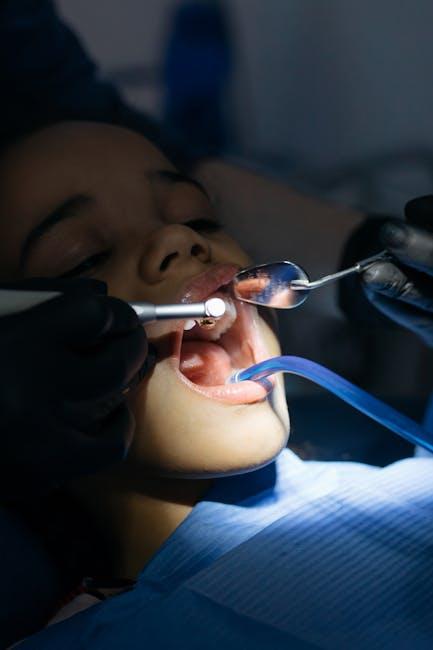1 in 3 Kids Has Dental Problems, Poll Finds – U.S. News & World Report
Oral health is a crucial element of overall well-being, yet a recent U.S. News & World Report poll has uncovered a concerning statistic: nearly one in three kids in the United States is suffering from dental problems. This alarming figure highlights a growing public health issue that demands attention from parents, caregivers, and policymakers alike. In this detailed article, we’ll explore the causes behind this trend, its consequences, and practical tips to help protect your child’s smile for a lifetime.
Understanding the Dental Problems Affecting Kids
Dental problems in children can range from mild to severe and include cavities, gum disease, tooth sensitivity, and even early tooth loss. According to the poll, the most common dental issues reported among children aged 2 to 12 were:
- Dental cavities (tooth decay)
- Gum inflammation or gingivitis
- Tooth pain and sensitivity
- Misaligned or crowded teeth
- Enamel erosion
To better illustrate how widespread these issues are across different age groups and demographics, here is a summary table based on the poll data:
| Age Group | % of Kids with Dental Problems | Most Common Issues |
|---|---|---|
| 2-5 years | 25% | Cavities, Gum Inflammation |
| 6-9 years | 33% | Cavities, Tooth Sensitivity |
| 10-12 years | 37% | Tooth Decay, Misalignment |
Why Are Dental Problems So Common Among Children?
Several factors contribute to the high prevalence of dental problems among children. Understanding these causes can help parents take proactive steps to improve their kids’ oral health.
1. Poor Oral Hygiene Habits
Children often resist or forget to brush and floss their teeth regularly. Without proper daily oral hygiene, plaque builds up, leading to cavities and gum disease.
2. High Sugar Consumption
Excessive intake of sugary snacks and drinks feeds the bacteria in children’s mouths, accelerating tooth decay. This includes sodas, candies, and even some fruit juices.
3. Limited Access to Dental Care
Economic disparities affect many families, making regular dental visits challenging. Lack of preventive care means conditions go untreated until they worsen.
4. Genetic and Environmental Factors
Genetic predispositions, combined with environmental elements such as lead exposure or poor nutrition, can increase a child’s likelihood of dental issues.
Long-Term Consequences of Children’s Dental Issues
Dental problems in childhood can lead to serious complications if left unaddressed. These include:
- Chronic pain and discomfort affecting eating, speaking, and daily life.
- Infections that may require antibiotics or more invasive procedures.
- Misalignment of permanent teeth, leading to orthodontic problems later in life.
- Lower self-esteem due to visible dental decay or missing teeth.
- Increased risk for systemic health issues, such as heart disease and diabetes.
Practical Tips to Prevent Dental Problems in Kids
Protecting your child from dental problems starts with consistent care and healthy habits. Here are effective tips every parent should follow:
- Establish a regular brushing routine: Teach kids to brush their teeth twice a day with fluoride toothpaste for at least two minutes each time.
- Introduce flossing early: Help children floss once daily to remove plaque and food particles between teeth.
- Limit sugary foods and drinks: Choose healthier snacks like fruits, vegetables, and cheese instead of candy and soda.
- Schedule dental checkups: Visit the dentist every six months for professional cleaning and early detection of problems.
- Use dental sealants: Ask your dentist about sealants to protect permanent molars from decay.
- Encourage drinking water: Water helps rinse away food particles and maintains saliva production which protects teeth.
Case Study: Turning Around a Child’s Dental Health
Emily, an 8-year-old from Ohio, struggled with multiple cavities and frequent toothaches. Her parents, unaware of the severity at first, finally took her to the dentist after a persistent complaint of pain. Her dentist created a comprehensive care plan including fillings, professional cleanings, and education on brushing techniques. Within six months, Emily’s oral health improved dramatically. Her parents also switched to a low-sugar diet and made dental care a fun, daily priority.
Benefits of Early Dental Care for Children
Addressing dental health problems early offers numerous advantages:
- Reduced treatment costs: Preventing cavities saves money versus extensive dental work.
- Improved eating and nutrition: Healthy teeth allow kids to enjoy a balanced diet without pain.
- Enhanced speech development: Proper tooth alignment supports clearer speech.
- Better academic performance: Pain-free children focus better at school.
Conclusion: Taking Charge of Your Child’s Dental Health Today
With 1 in 3 kids experiencing dental problems in the U.S., it’s clear that childhood oral health requires greater awareness and action. Parents, caregivers, and communities must prioritize preventive care, routine dental visits, and healthy lifestyle habits to combat this growing concern. Remember, a healthy smile contributes to your child’s confidence, comfort, and overall well-being.
Don’t wait for dental problems to appear—start today by reinforcing good oral hygiene practices and consulting a pediatric dentist regularly. Your child’s future smile depends on the care you provide now.
For more expert advice and updates on children’s oral health, keep following U.S. News & World Report Oral Health.


